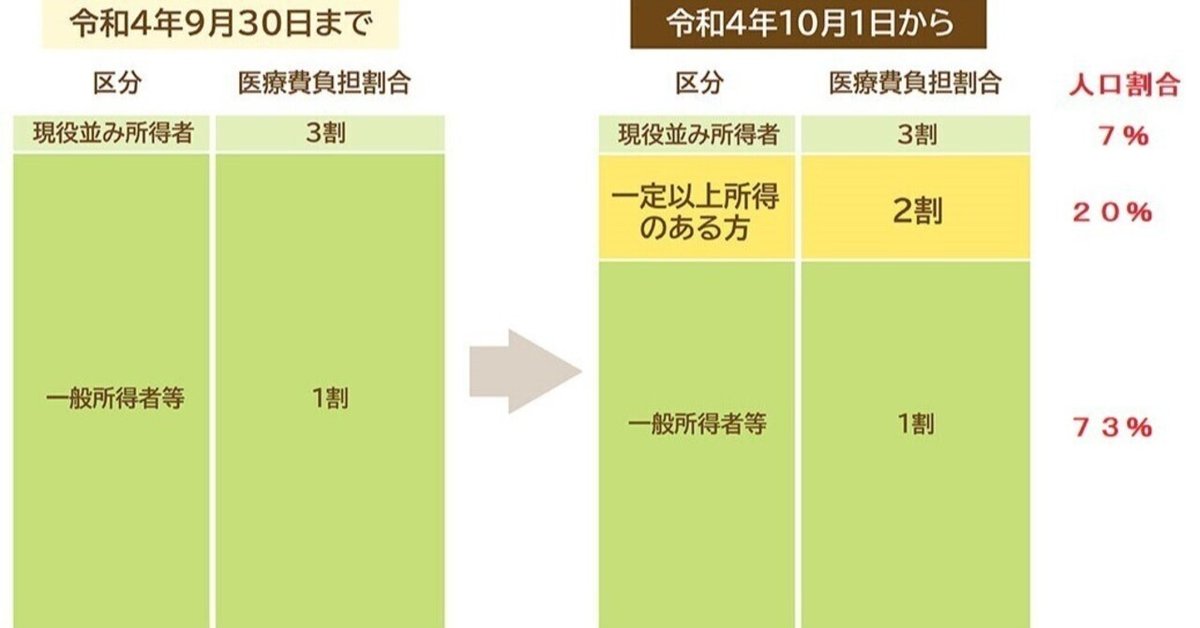
後期高齢者の医療費窓口負担割合とその人口割合 The percentage of medical expenses borne by the elderly in the later stage of life and its population ratio
昨年、令和4年10月1日から、75歳以上の後期高齢者の医療費の負担割合が変更されました。
年間所得で3区分されています。
かかった医療費の10%の負担をする一般所得者(年間所得が350万円以下)が全体の73%、20%の負担をする人(年間所得が350万円以上)が全体の20%、30%の負担をする人(年間所得が現役並み)が全体の7%となっています。
もう少し細かな区別をした方が良いと思います。
特に現役並みの年間所得者の所得を500万円以上、1000万円以上で区分してその負担率を40%、50%にしてほしいです。
コンピュータでの計算作業ですから、決して難しい作業ではなく、これで現役世代、若い世代の負担が軽減できるのですから早急に変更して実施すべきでしょう。
The percentage of medical expenses borne by the elderly in the later stage of life and its population ratio:
Effective October 1, last year of 2022, the percentage of medical expenses borne by late-stage elderly persons aged 75 and over has been changed.
There are three categories based on annual income.
Those who pay 10% of medical expenses (annual income of 3.5 million yen or less) are 77% of the total, those who pay 20% (annual income of 3.5 million yen or more) are 20%, and those who pay 30% (annual income equivalent to the working-age population) are 7% of the total.
I think it would be better to make a more detailed distinction.
In particular, we would like the annual income of those with annual income equal to or greater than 5 million yen and those with annual income equal to or greater than 10 million yen to be set two more categories, and the burden rate for these categories to be 40% and 50%.
Since this is a computerized calculation process, it is not a difficult task, and this will reduce the burden on the working-age and younger generations, so it should be changed and implemented as soon as possible.
